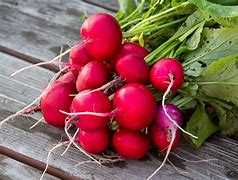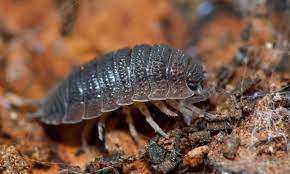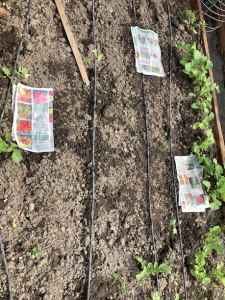“Lyda was an exuberant, even dramatic gardener... She was always holding up a lettuce or a bunch of radishes with an air of resolute courage, as though she had shot them herself.” — Renata Adler
NOTE: Radishes are a crop that those of us who are impatient to start gardening in the spring can plant, grow and harvest in a fairly short amount of time — in fact, the bed space used for radishes will be available for planting of tomatoes, cucumbers, squash or other crops at the time that it’s appropriate to plant them.

FAST FACTS
Benefits and nutritional information:
- Radishes are a good source of antioxidants like catechin, pyrogallol, vanillic acid, and other phenolic compounds.
- These root vegetables also have a good amount of vitamin C, which acts as an antioxidant to protect your cells from damage as well as chemical compounds that can help regulate blood sugar levels and reduce the risk of diabetes.
Starting:
- Radishes are grown from seeds. Sow radish seeds 1” apart in rows one foot apart in loosened soil.
- Soil that is not properly loosened or contains pebbles can result in deformed radish roots.
- Cover with soil and water them gently to avoid dislodging the seeds.
When to plant:
- Being a cool weather crop, radishes can be planted from early April to early May for a spring crop,
- and again during the month of September for a fall crop.
- One additional benefit of planting radishes very early in the season is that they can mature to harvest before any of the pests — other than slugs and woodlice — appear.
- Keep planting radishes every ten days for a continuous harvest.
Thinning, training:
- One week after the seedlings appear, thin them to one plant every two or three inches.
- Radishes that aren’t properly thinned won’t grow bulbs.
- Some gardeners deliberately sow more seeds than are needed in order to have a good crop of radish sprouts to add to salads. Besides being nutritious, they add a mild, delightful flavor.
Signs of over-watering, nutrient deficiency
- Radishes like soil that is moist but not overly wet. Too much water can show up as yellow foliage.
- Too much nitrogen in the soil will cause radishes to develop too much foliage and not a sufficient root.
- They do require phosphorus for seed germination and root growth.
- Bone meal is an excellent fertilizer for radishes.
Pests and pest controls
- Slugs
- Root maggots
- Flea beetles
- Woodlice (or Pillbugs, Roly-Poly bugs, Sow bugs, or at least 51 other common names) See section below.
Harvesting
- Timing is important in harvesting radishes.
- If harvested at the right time they are crisp and have a mild flavor. If they are left in the garden too long they become both too hot and “woody.”
- The best way to determine when to harvest is to push back a little soil to see if a bulb has grown, and then taste a few.
WOODLICE
What are they?

- Woodlice are small, primitive-looking crustaceans that are often found in old wood — in our case, near frames, stakes or scraps of wood in garden beds.
- You may know them, or their close relatives, by one of more than fifty common names including pill bugs, sow bugs, and roly-poly bugs.
The Problem:
- First of all, it’s important to know that woodlice are not necessarily pests. In fact, for the most part they’re considered a beneficial species; feeding mostly on dead plant matter and thus helping to recycle nutrients back into the soil.
- They can cause damage to freshly sprouted shoots and to strawberries and radishes.
Signs of Damage:
- Chips taken out of the above-ground part of a radish can come from one of several sources. Larger ones can be from slugs, mice or birds; however, small ones should make you suspect woodlice since their mouthparts are only capable of rasping out small, shallow bits.
- Likewise, small rasped areas on new shoots may be from woodlice while more significant damage — including completely eaten off stems — are going to be symptomatic of some other kind of pest.
Controls:
- The first control measure would be to remove all unnecessary bits of wood that are kept moist due to contact with the soil.
- This includes wood chips you may have used as mulch.
- Traps for woodlice are easy to make. Put pieces of cut potato, orange peels, grated cheese or strawberries between two thick layers of damp newspaper.
- The woodlice will collect on the undersurface of the newspaper and may be collected and discarded in the mornings.
- Woodlice don’t have to be disposed of too far away from your garden bed since they aren’t very mobile.
- Diatomaceous earth may also be sprinkled around problem areas, killing off any woodlice headed for your plants.


